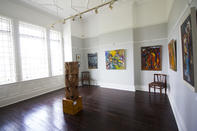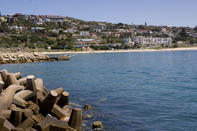Natural History
Never mind the many other fine items housed in the East London Museum, including the first coelacanth, the fish thought to be the evolutionary link between earth mammals and sea creatures, found in 1938.

It's the only place in the world with a dodo egg (viewing by special request). If you're a natural history philistine, just ask your B&B for a boiled egg and enlarge it in your imagination - to about half the size of an ostrich egg.
The Two-axis Dolos

In days long before Wi-Fi, before Playstation, and even before Dinky cars, South African children used the knucklebones of sheep and goats (dolosse) as toy oxen and cattle vertebrae as wagons. Later, but still pre-Wi-Fi, there was a game that used similarly H-shaped 'jacks'.
In 1963 a terrible storm along the Eastern Cape coast ripped away most of East London's harbour wall. Harbour engineer Eric Merrifield thought that a breakwater that wasn't solid might more easily break the power. After a few prototypes, he came up with the two-axis dolos. Merrifield never patented the design, so you can see them at harbours not just in South Africa, but around the world.
Steve Biko Statue

Although King William's Town was his home, and is where he lies buried, the main remembrances to the man who might one day have been president, Steven Bantu Biko, are located in the largest city of the Border region, East London.
In 1997, on the 20th anniversary of his death at the hands of the security police, the John Vorster Bridge over the mouth of the Buffalo River was renamed Steve Biko Bridge. A bronze statue of the Black Consciousness leader by Naomi Jacobson was donated to the city by Cry Freedom actors Denzel Washington and Kevin Kline, and musician Peter Gabriel.
Also on the 20th anniversary of Biko's death, then-President Nelson Mandela declared the Biko family home at No. 698 Leightonville, Ginsberg Township (outside King William's Town), a national heritage site.